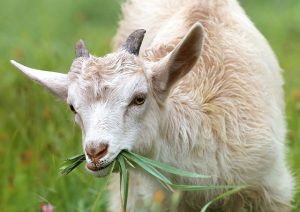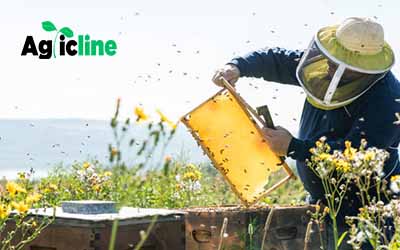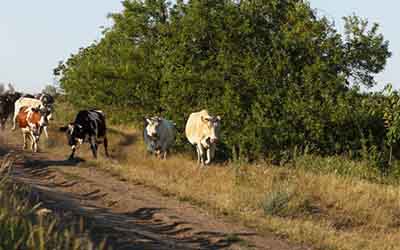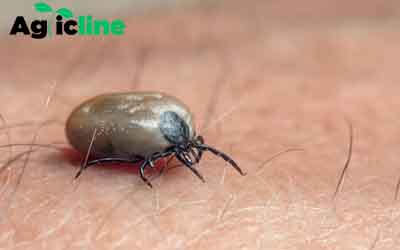Rotational grazing is a method of livestock management where animals are systematically moved to fresh pastures or sections of grazing land to allow for the regrowth and recovery of grazed areas.
This practice is widely regarded in the agricultural community as an effective way to maintain the health and productivity of pastures while also supporting the nutritional needs of livestock.
It’s commonly praised for its benefits in improving soil health, increasing pasture resilience, and potentially enhancing livestock production.
See Also; Agroforestry in Nigeria
Despite its widespread adoption and positive reception, there are aspects of rotational grazing that are less frequently discussed, particularly its potential drawbacks.
In this blog post, we aim to look into these lesser-known territories, exploring the disadvantages of rotational grazing.
This exploration is crucial, as it provides a more holistic understanding of the practice, enabling farmers and agriculturalists to make more informed decisions.
By examining the challenges and limitations of rotational grazing, from environmental impacts to economic and management difficulties, we can uncover a more nuanced view of this popular agricultural technique.

Disadvantages of rotational grazing
- Environmental Concerns
- Economic Challenges
- Management Difficulties
- Animal Welfare Concerns
Environmental Concerns
Rotational grazing, often lauded for its environmental benefits, does have its share of ecological drawbacks that merit closer examination.
Here, we delve into three key environmental concerns: soil degradation, biodiversity loss, and water resource depletion.
- Soil Degradation
While rotational grazing can improve soil health in some contexts, it also has the potential to cause soil degradation, particularly when not managed effectively.
The frequent movement of livestock can lead to soil compaction, especially in areas with heavy animal traffic such as gateways or water troughs. Compacted soil reduces its porosity, limiting the infiltration of water and air.
Read Also; What is Tedder in agriculture?
This can lead to increased runoff, erosion, and reduced soil fertility, undermining the very benefits rotational grazing is supposed to offer.
- Biodiversity Loss
The impact of rotational grazing on biodiversity is complex and can be counterintuitive.
While it can create diverse habitats in some cases, it can also lead to a loss of biodiversity, particularly in ecosystems that are not adapted to frequent grazing.
The constant grazing pressure can favor certain plant species over others, leading to a homogenization of plant communities.
- Water Resource Depletion
Rotational grazing can significantly impact water resources, both in terms of quantity and quality. Concentrated animal numbers in small areas can lead to increased manure and urine output in these zones.
Without proper management, this can lead to nutrient runoff into water bodies, contributing to eutrophication – a process that depletes oxygen in water and harms aquatic life.
Economic Challenges
Rotational grazing, though potentially beneficial for land and livestock, comes with a unique set of economic challenges.
These include high initial investments, ongoing maintenance costs, and the risk of lower yields, each of which can significantly impact the financial viability of a farming operation.
- High Initial Investment
Implementing a rotational grazing system often requires a substantial upfront investment.
This cost includes the installation of fencing to divide the pastures into smaller sections or paddocks, and the establishment of water systems in each paddock to ensure livestock have access to water.
Moreover, farmers may need to invest in new tools and equipment specifically suited for managing smaller, more intensively managed pastures.
- Maintenance Costs
Once a rotational grazing system is in place, it incurs ongoing maintenance costs. Fences need regular repairs and upgrades, water systems require maintenance, and pasture lands may need reseeding or other treatments to maintain their productivity.
These recurring expenses can add up, particularly in larger operations or in areas with harsh environmental conditions that wear down equipment and infrastructure more quickly.
- Risk of Lower Yields
While rotational grazing can lead to more efficient use of pastures, there’s also a risk of lower yields, particularly in the initial phases of implementing the system.
Adjusting to a new grazing pattern can be stressful for livestock, potentially impacting their health and productivity.
This stress can manifest in lower milk yields, slower weight gain, or reduced reproductive rates, directly affecting the farm’s bottom line.
Management Difficulties
The implementation of rotational grazing systems, while beneficial in various ways, introduces a series of management challenges that can be both complex and labor-intensive.
These difficulties range from the intricacies of planning and executing grazing schedules to the increased labor requirements and complexities in disease management.
- Complexity of Planning
Effective rotational grazing requires careful planning and continuous adaptation. Farmers must consider numerous factors, including the type and size of livestock, pasture growth rates, weather patterns, and soil conditions.
Developing a grazing schedule that optimizes pasture recovery time while meeting the nutritional needs of the livestock is a delicate balance. Miscalculations can lead to overgrazing, undergrazing, or inefficient use of the land.
- Labor Intensity
Rotational grazing is generally more labor-intensive than traditional grazing methods.
Moving livestock between paddocks, maintaining fencing, monitoring pasture health, and adjusting grazing schedules all require significant time and effort.
This increase in labor demand can be challenging for small-scale operations or those with limited manpower.
- Disease Management
The close proximity and frequent movement of animals in rotational grazing systems can lead to challenges in managing diseases.
Contagious diseases can spread quickly through a herd as animals are moved to different paddocks, especially if there is inadequate quarantine or isolation of affected animals.
Animal Welfare Concerns
While rotational grazing is often implemented with the intention of promoting animal health and welfare, there are aspects of this system that can inadvertently lead to welfare concerns.
Read also; Artificial intelligence in agriculture projects (You don’t want to miss reading about this one)
These issues primarily revolve around stress and health, nutritional deficiencies, and behavioral restrictions.
- Stress and Health
Rotational grazing involves regularly moving animals to new paddocks, which can induce stress, particularly in more sensitive animals.
The constant change in environment, social dynamics (as animals may be mixed or separated during moves), and the process of herding can contribute to stress.
Chronic stress in livestock can lead to weakened immune systems, making them more susceptible to diseases and infections.
Read Also; Best precision agriculture technologies
Nutritional Deficiencies
One of the challenges of rotational grazing is ensuring that each paddock provides adequate and balanced nutrition throughout the grazing period.
The nutritional content of forage can vary significantly between different areas of a farm and throughout the grazing season. This variation can lead to nutritional deficiencies if not properly managed.
For instance, some paddocks may be rich in certain nutrients but lack others, or the nutritional value of the forage may decline as it matures.
If livestock do not receive a balanced diet, it can affect their growth, reproduction, milk production, and overall health. Supplemental feeding may be required to address these deficiencies, adding to the complexity and cost of managing a rotational grazing system.
- Behavioral Restrictions
Rotational grazing systems, by design, restrict the movement of livestock to specific areas for controlled periods.
This confinement can limit the expression of natural behaviors. For example, animals may have limited ability to select preferred forages, explore, or establish stable social hierarchies.

Conclusion on the Disadvantages of rotational grazing
In this exploration of the disadvantages of rotational grazing, we have delved into various aspects that challenge its effectiveness and sustainability.
From environmental concerns to economic challenges, management difficulties, and animal welfare issues, it’s evident that rotational grazing, while beneficial in many respects, is not a one-size-fits-all solution for agricultural practices.
Summary of Key Disadvantages
- Environmental Concerns: We discussed how rotational grazing could lead to soil degradation, biodiversity loss, and water resource depletion. These factors underscore the importance of careful ecological management and monitoring in rotational grazing systems.
- Economic Challenges: The high initial investment, ongoing maintenance costs, and the risk of lower yields present significant financial barriers. These economic factors can be particularly daunting for small-scale farmers or those operating in challenging environmental conditions.
- Management Difficulties: The complexity of planning, increased labor requirements, and challenges in disease management are significant hurdles. These factors demand a high level of expertise and continuous adaptation to changing conditions.
- Animal Welfare Concerns: Issues like stress and health, nutritional deficiencies, and behavioral restrictions highlight the need for vigilant welfare practices in rotational grazing systems. Ensuring that livestock’s physical and psychological needs are met is crucial.
Recognizing the Benefits and Limitations
While acknowledging these disadvantages, it’s also important to recognize the potential benefits of rotational grazing, such as improved soil health, efficient use of pasture resources, and possible enhancements in livestock production.
The key lies in striking a balance, understanding that rotational grazing requires careful planning, management, and adaptation to specific environmental and farm conditions.
Future of Rotational Grazing
Looking ahead, the future of rotational grazing lies in integrating research, farmer experiences, and technological advancements to refine and adapt these systems.
Innovations in pasture management, livestock monitoring, and environmental conservation can help mitigate the disadvantages.
Moreover, sharing knowledge and experiences, as seen in the case studies, plays a vital role in the continuous improvement of rotational grazing practices.
Frequently Asked Questions (FAQs) on Rotational Grazing
See below;
What is rotational grazing and how does it differ from traditional grazing?
Rotational grazing is a livestock management practice where animals are moved between different sections or paddocks of grazing land, allowing each area to recover and regrow.
This contrasts with traditional continuous grazing, where animals graze one area continuously for an extended period.
What are the main disadvantages of rotational grazing?
The main disadvantages include environmental concerns like soil degradation and biodiversity loss, economic challenges such as high initial investment and ongoing maintenance costs, management difficulties including the complexity of planning and labor intensity, and animal welfare concerns like stress and nutritional deficiencies.
Can rotational grazing lead to soil degradation?
Yes, if not managed properly, rotational grazing can lead to soil degradation. Factors like overgrazing, insufficient recovery time for pastures, and soil compaction from livestock can contribute to this issue.
Is rotational grazing more expensive than traditional grazing methods?
Initially, rotational grazing can be more expensive due to costs associated with setting up paddocks, installing fencing, and ensuring water availability in each section.
However, it can be more cost-effective in the long run if managed efficiently.
How does rotational grazing affect animal welfare?
Rotational grazing can have both positive and negative impacts on animal welfare.
While it provides animals with access to fresh forage and can improve overall health, it can also cause stress due to frequent moving, potential nutritional imbalances, and restricted natural behaviors.
What are the environmental benefits of rotational grazing?
The benefits include improved soil health, increased pasture resilience, and, in some cases, enhanced biodiversity and ecosystem services.
How labor-intensive is rotational grazing compared to traditional grazing?
Rotational grazing is generally more labor-intensive, as it involves regular moving of livestock, maintenance of fences and water systems, and close monitoring of pasture conditions and animal health.
Can rotational grazing improve pasture productivity?
Yes, when properly managed, rotational grazing can improve pasture productivity by allowing for regrowth and recovery of grazed areas, leading to a more sustainable use of pasture resources.
What kind of planning is required for effective rotational grazing?
Effective rotational grazing requires careful planning that considers factors like the number and type of livestock, size of paddocks, pasture growth rates, and local environmental conditions.
Are there any specific strategies to mitigate the disadvantages of rotational grazing?
Yes, strategies include proper planning and management to avoid overgrazing, investing in durable infrastructure to reduce maintenance costs, continuous monitoring and adaptation to environmental conditions, and ensuring balanced nutrition and minimal stress for the livestock.
Recommendations
Environmental benefits of urban farming
Best Water management technology in agriculture



